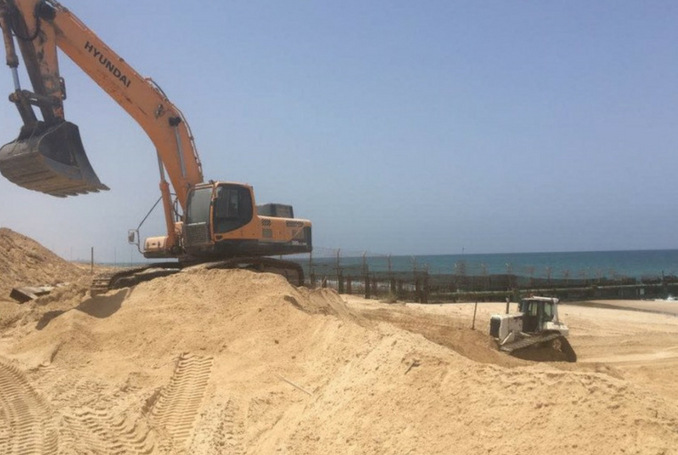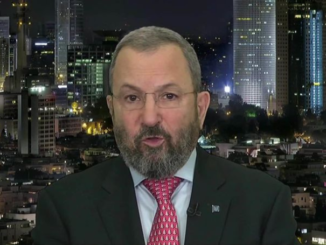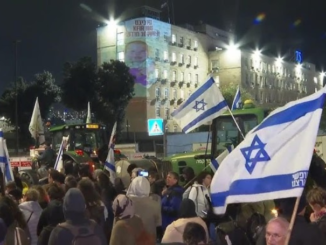
Israel’s Ministry of Defence yesterday released the first images of its sea barrier designed to further blockade the besieged Gaza Strip. The barrier is located on Zikim beach, approximately three kilometres from Gaza’s northern frontier. The project is slated to be completed by the end of 2018 and is likely to cost an estimated 25 million shekels ($6.7 million).
Video shows Israel building Gaza sea barrier#FreePalestine #GazaSiege pic.twitter.com/3E9I5tQ7jp
— Press TV (@PressTV) August 5, 2018
When completed, the structure will stretch 200 metres out into the Mediterranean Sea, further cutting off the Gaza Strip from Israel. The barrier will consist of three layers: an underwater base level; a 50-metre-wide sea-level platform made of armoured stone, and a six-metre-high barbed wire fence. A further fence will also surround the barrier itself as “an additional security measure.”
Israel builds ANOTHER wall … underwater. https://t.co/NQxoFNRX2o
— Ann Coulter (@AnnCoulter) August 6, 2018
The barrier has been praised by Defence Minister, Avigdor Liebermann. “The construction of the barrier around the Gaza Strip, both on land at sea, is progressing at a rapid and impressive pace,” said the extreme right-winger.
The initiative will likely be seen as a further attempt by Israel to tighten its siege of the Gaza Strip, which has been ongoing since 2007. Israel has closed all pedestrian and commercial crossings into and out of the enclave and has constructed a “security fence” along the Green (1949 Armistice) Line which serves as a border.
Unlike every other UN member state, Israel has never formally declared where its borders actually are.https://t.co/zgBVQo9U3s
— MintPress News (@MintPressNews) August 6, 2018
Alone of all UN member states, Israel has never formally declared where its borders actually are. A no-go area of approximately 300 meters is also imposed on the Gaza side of the fence, restricting the access of many families and farmers to their land.
Israel has also imposed a naval blockade on the Gaza Strip, which currently limits Gaza’s fishermen to a distance of three nautical miles, some 17 less than was original proposed under the Oslo Accords of the early 1990s.
#Israel Captures Second #Gaza-Bound Aid Ship https://t.co/vJkCKkXLCv via @PalestineChron pic.twitter.com/XtLvwv5jlC
— Palestine Chronicle (@PalestineChron) August 6, 2018
Last week, two ships belonging to the Freedom Flotilla attempted to break the naval blockade, but were intercepted by Israeli naval forces in international waters. Crew members of Al-Awda, the first ship to be intercepted, have accused Israeli forces of violence and other governments have said that Israel’s actions broke international law.
The impact of the siege has been severe. Gaza’s industrial and commercial sectors have been damaged, with Israel’s ban on imports of fuel and gas leading to shortages and high unemployment.
Justice for Palestinian children!!!
Israeli leaders must be held accountable for these daily War Crimes in Occupied Palestine!https://t.co/scaQfEh4he https://t.co/e30Tvn061o
— Voices For Palestine (@Voices4Pals) August 4, 2018
Last week, senior UN officials voiced concern over the humanitarian situation facing Gaza’s children and the continued violation of their rights. Deputy spokesman for UN Secretary-General, Farhan Haq, said that the officials “called on all sides to put children’s rights ahead of any other considerations, and to take immediate steps to alleviate their suffering.”
(MEMO, PC, Social Media)







